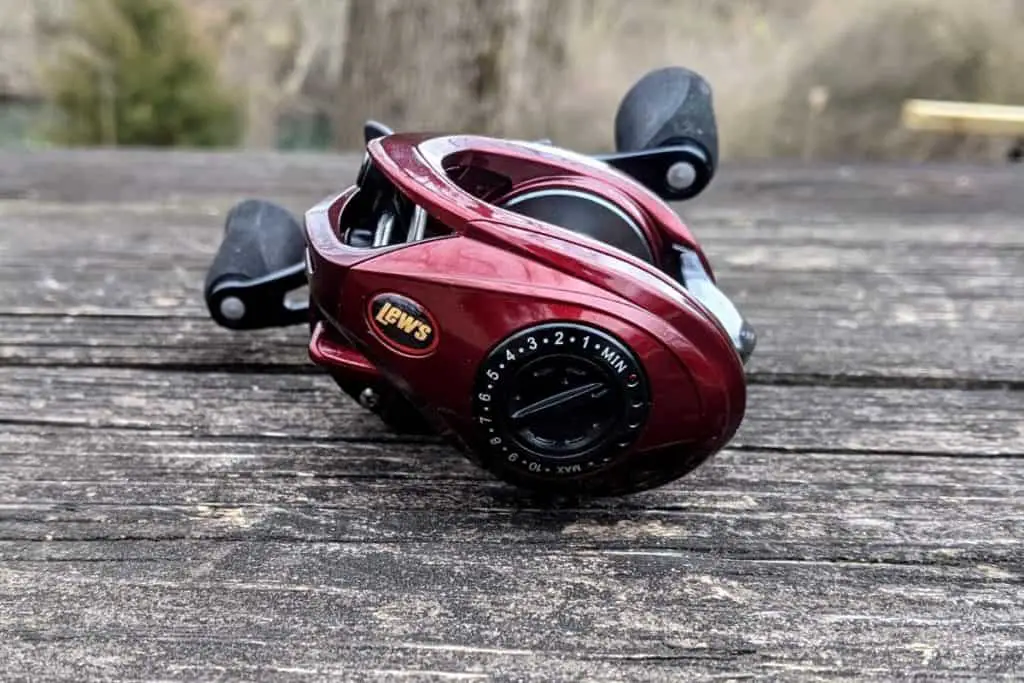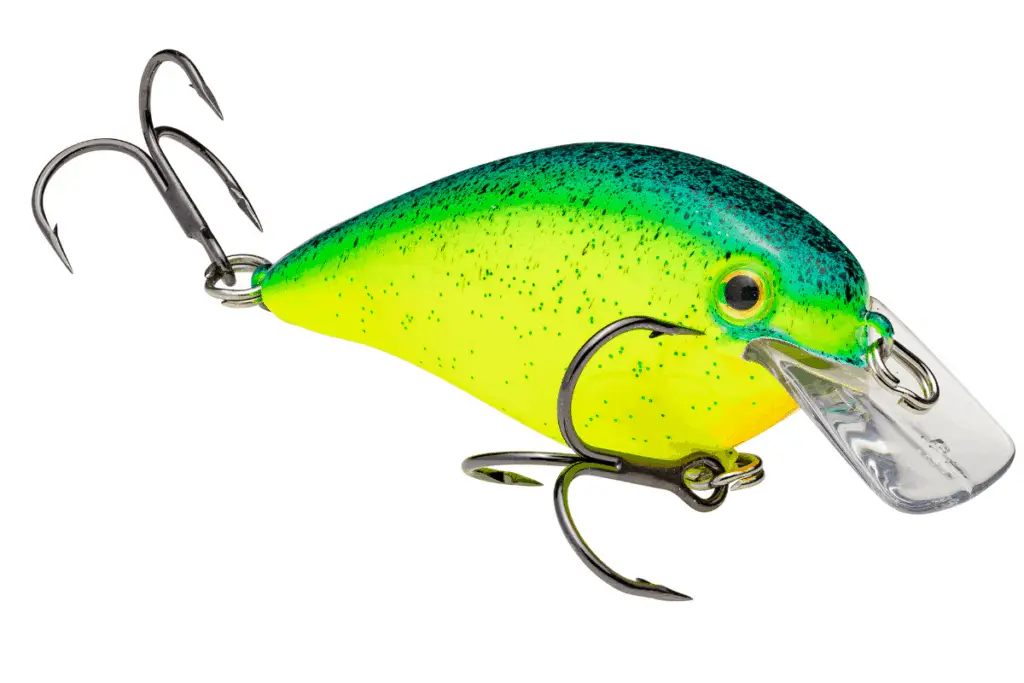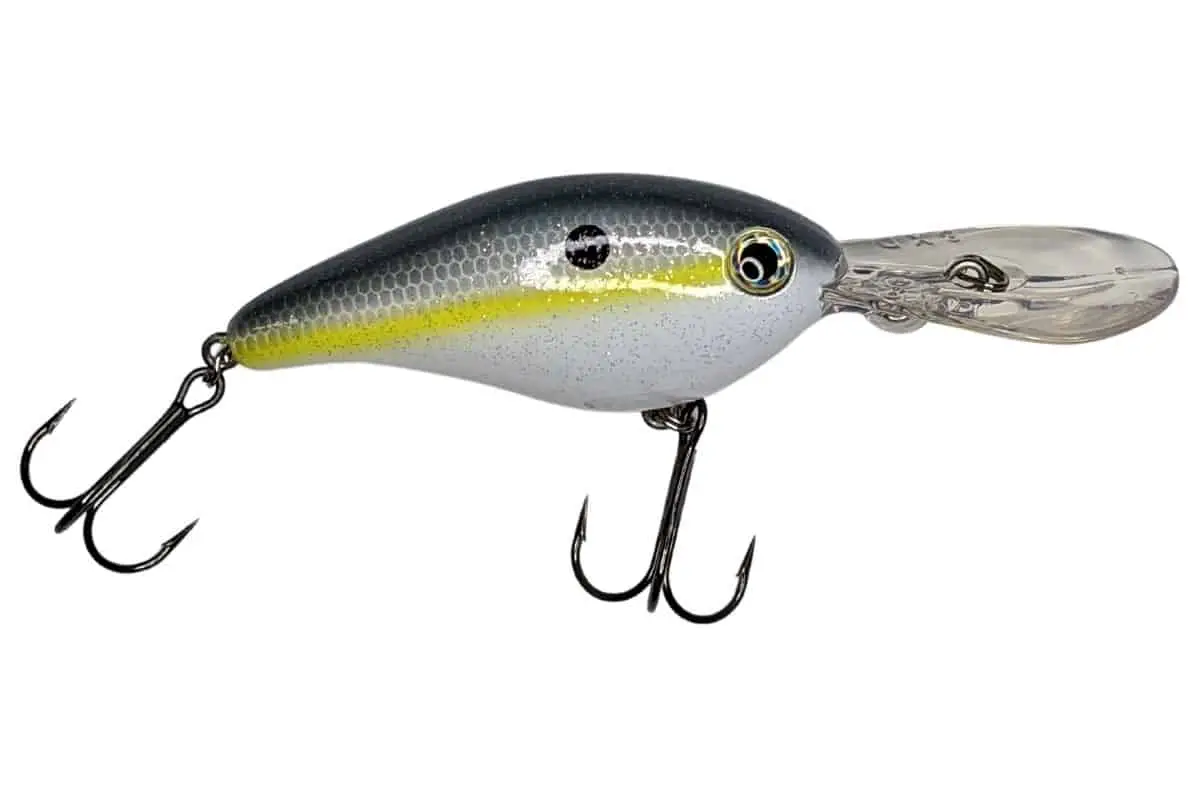Speed is a critical factor when bass fishing. Each lure is unique and requires a different approach to the presentation. Crankbaits are no exception.
The crankbait will be running at its optimum speed when the rod tip is vibrating at its maximum range and the lure is tracking straight.
Of course, the variety of crankbaits on the market are designed for different situations. Let’s break down crankbait speed and how to approach this often asked question.
Deep Diving Crankbaits and Their Optimum Speed
Of all the lures in the bass fishing world, the deep diving crankbait is probably the most misunderstood and therefore fished with the least effectiveness.
Understanding the factors that impact this lure, its depth, and action will make you a noticeably better deep diving crankbait angler.

Best Reels for Deep Diving Crankbaits
We fish too fast most of the time. This is especially true when fishing deep diving crankbaits.
I prefer to use low-gear ratio reels to help me when fishing these lures. In the past, a reel in the 5.2:1 range was considered slow. In today’s market, it is getting hard to find a baitcast reel in that gear ratio. Most manufacturers now consider a 6.3:1 a low-gear ratio model.
| Gear Ratio | Inches of Recovery Per Turn (RPT) |
| 5.1:1 | 21″ |
| 6.2:1 | 25″ |
| 7.5:1 | 31″ |
| 8.3:1 | 35″ |
To give you a baseline to go with, David Fritts is a proponent of 21” of line recovery per turn. David has made a tremendous career on the pro bass fishing circuits and is a renowned crankbait angler – especially with deep divers. As you can see, that 21” he talks about coincides nicely with lower gear ratio reels.
I also like to think about rod tip vibration as an excellent indicator of the right crankbait speed.
If you look at the tip of your crankbait rod the next time you throw a deep diver, take note of the way the rod tip vibrates. Experiment with reeling the lure faster and slower. You will notice a difference.
When the lure is running the right speed the rod tip vibration will be at its maximum, yet the crankbait will still track true and straight. This is important to note. I can reel that deep diver at lightning speed and get crazy vibration from the rod tip, but the lure is going to roll and turn all over and not run straight. This is not what we want.
By paying attention to the rod tip and using a lower-gear ratio reel, your deep diving crankbait speed will be getting close to that optimum range.
Other Factors That Influence Crankbait Speed
Spool diameter and line size both impact how fast that deep diving crankbait is moving.
A spool with a wider diameter is going to recover more line than a spool with a smaller one. The amount of line on the spool as well as the pound test of the line also impact recovery rate.
The more line, or the larger diameter line because of test size, will therefore create an overall spool with a greater diameter. Using a lower pound test line, like 10lb fluorocarbon, is going to help slow your crankbaits down.
The Proper Crankbait Speed and Depth
Deep diving crankbaits are designed to hit certain depth ranges. To get that lure to its maximum potential, the same slower retrieve speed is key.
Sometimes anglers think they need to reel quickly to get the lure to its proper depth. That actually does the opposite. The same is true if the lure is brought back too slowly.
If you take a few minutes the next time a deep diver is tied on your line and experiment with retrieve speed, all of this information will become clear. It is easier to feel when the lure is running at the right speed than you might think.
Casting Distance and Rod Length for Deep Diving Crankbaits
Lure speed is not the only factor that influences a deep diver and the ability of the lure to hit its maximum depth.
A deep diving crankbait is not in the optimum zone as long as we want to think it is. Even with a steep dive angle, the lure starts to work its way back to the surface much quicker than often realized.
This makes long, and I mean really long, casts a critical component to success.
Using a longer rod designed for crankbaits can help achieve the distance needed on the cast to make the presentation more efficient and likely to draw strikes.
I prefer to use composite rods, not graphite, that are at least 7’6” in length. My favorite crankbait rod is a 7’10” model. On a side note, all of my crankbait rods were designed by David Fritts. No coincidence there.
It takes some practice to get eye-popping long casts, but this time is worth the effort. It will pay dividends and bring more deep diving crankbait bass to your boat.

Squarebill Crankbaits and Speed
Squarebill crankbaits are the exception to the rule.
Earlier, I mentioned that we often fish too fast – which is true. If you have a squarebill tied on, then we have the option to fish it as fast as we can.
I have caught lots of bass crawling a squarebill through thick cover – very similar to how you might fish a spinnerbait. Yet, burning a squarebill is a ridiculously effective tactic that triggers bass to strike even on days when they don’t want to.
Rick Clunn, another legendary professional angler, has talked about this for years. He was shown how to do this by a partner fishing a squarebill and it fascinated him.
It works.
My favorite situation to burn a squarebill is over the tops of vegetation. I crank it as fast as I can and let it snag and rip through those weeds. The lakes I fish most of the time are crystal clear and I have witnessed bass come screaming from the depths to blister a squarebill zipping through the water column.
It takes some time to dedicate to this presentation because it feels so unlikely to work, but give it a chance.
I know it appears counterintuitive to what I just wrote about and deep diving crankbaits, but it is a solid presentation that works, can catch numbers of fish, and is utilized by savvy pro anglers on all the major circuits.
Because of this, when a traditional slower squarebill crankbait retrieve is not working, I prefer to rig up a high speed reel in the 8.2:1 range and start burning.
Final Thoughts
When fishing deep diving crankbaits, the optimum speed is slower than we realize. The opposite is true for squarebills. If the slower retrieve is not working, burn it as fast as you can.
Be aware of things like spool diameter, line diameters, and our tendency as anglers to fish too fast and you will be well on your way to becoming a deep diving crankbait enthusiast.
Be safe out there and make sure to encourage someone today. You never know how you may change their life forever.
Isaiah 6:8

